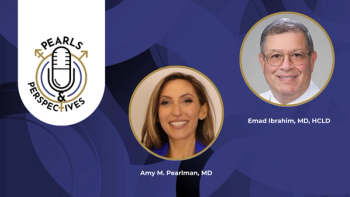
Drug therapies for PBS/IC continue to evolve
With 183 drugs tied to painful bladder syndrome/interstitial cystitis and none hitting a home run, what should clinicians do?
Key Points
Bethesda, MD-With 183 drugs tried in painful bladder syndrome/interstitial cystitis (PBS/IC) and none hitting a home run, what should clinicians do?
But no matter what the players are, there is one sure pharmacologic target.
"Players"-plural-is key to more effective therapy.
"Effects of single-drug treatment are not impressive," pointed out Dr. Andersson, who is a professor in the Institute for Regenerative Medicine at Wake Forest University in Winston-Salem, NC. "We shouldn't refrain from discussing logical combination therapy, not only two drugs, maybe three."
So far, expert opinion points to a sequence of events in PBS/IC that starts with urothelial cell dysfunction as the major player. Mast cell activation and C-fiber nerve upregulation likely follow. "Wind-up" in the spinal cord and central nervous system may be the next steps, and, finally, visceral organ hyperalgesia and allodynia, with urinary, gynecologic, pelvic floor, and gastrointestinal manifestations, said Dr. Andersson.
Early on, urothelial dysfunction may be the major player, so it makes sense to target treatments to the bladder when patients have not had symptoms long. But later, when other processes are in play, therapy needs to be directed at each. That means that what worked early may not work later, so clinicians need to be willing to change the regimen to adapt to the patient's disease. Patients in later stages may still benefit from bladder-directed therapies, but they require more than that.
Oral, CNS agents
A dizzying number of oral and intravesical treatments for PBS/IC directed at various targets have been tried (Nat Clin Pract Urol 2006; 3:45-53), but three oral treatments and various intravesical therapies have become fairly standard: pentosan polysulfate (Elmiron) and intravesical cocktails targeting the urothelium and bladder sensation, hydroxyzine hydrochloride (Atarax) targeting mast cells, and tricyclic antidepressants likely targeting nerve upregulation. Other therapies directed at the central nervous system wind-up are coming into more standard use, such as selective serotonin and norepinephrine reuptake inhibitors and gabapentinoids. Pain management may require additional therapy, such as opioids and nerve blocks.
Opinion about that sequence of events in the pathophysiology of PBS/IC is far from settled, however. And changing ideas about the process may also drive new therapeutic approaches. Chet deGroat, PhD, professor of pharmacology at the University of Pittsburgh School of Medicine, argued that the nervous system should be at the top of the sequence, not the bottom.
So little is understood about the pathophysiology of PBS/IC that "it could be that the primary afferent neurons are abnormal and that there is really nothing wrong with the urothelium, or the mast cells may be increased because urothelium is releasing some chemical that attracts them," he suggested.
Therapies directed at either abnormal sensory input from the bladder or abnormal processing of normal input in the central nervous system might well need to become first-line agents.
New therapies on the horizon
Nearly every potential target in PBS/IC is getting research attention, so urologists can look forward to more, and likely more effective, therapies in the not-too-distant future.
Newsletter
Stay current with the latest urology news and practice-changing insights — sign up now for the essential updates every urologist needs.
















